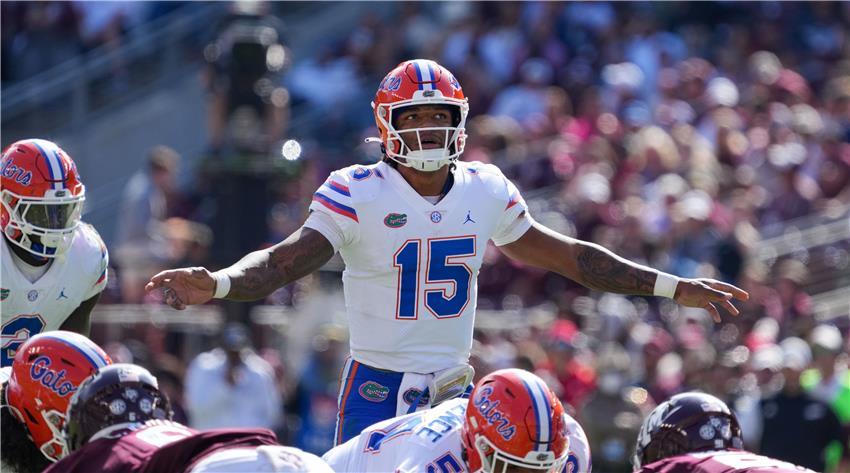
The 5th Year Option Trap - How One Draft Position Can Cost Players 20 Million
The invisible line between picks 31 and 32 creates the NFL's most expensive lottery ticket.
When the Indianapolis Colts selected Anthony Richardson with the fourth overall pick in the 2023 NFL Draft, they didn't just acquire a promising young quarterback. They purchased a $25.3 million insurance policy that could keep Richardson in Indianapolis through the 2028 season. Meanwhile, when the Philadelphia Eagles traded up to select Jordan Davis at pick 13 in 2022, they secured a fifth-year option worth approximately $11.4 million that could extend his rookie contract through 2026.
Compare that to Jalen Hurts, who was drafted 53rd overall in 2020. Despite becoming a franchise quarterback and leading the Eagles to a Super Bowl appearance, Hurts had no fifth-year option protection. Philadelphia was forced to negotiate a massive extension worth $255 million to keep him from hitting free agency after just four seasons.
This tale of two draft positions illustrates one of the NFL's most consequential yet misunderstood roster-building mechanisms: the fifth-year option. It's a rule that creates a financial Grand Canyon between picks 31 and 32, fundamentally altering the trajectory of careers and franchises in ways that most fans never realize.
The Mechanics of the Fifth-Year Option
The fifth-year option, implemented as part of the 2011 Collective Bargaining Agreement, grants NFL teams the unilateral right to extend first-round picks for a fifth season at a predetermined salary. This option must be exercised between the player's third and fourth seasons, and the compensation is tied to the player's position and performance metrics.
For most positions, the fifth-year option salary equals the transition tag value for that position - essentially the average of the top 10 salaries at the position. For quarterbacks, it's more complex: the salary is determined by where the QB was drafted and whether they've met certain performance benchmarks, including Pro Bowl selections and playoff wins.
The kicker? This option is entirely one-sided. Teams can exercise it without the player's consent, and the salary becomes fully guaranteed for injury immediately upon exercise. If the player suffers a career-ending injury, they're protected. But if they become superstars, they're locked into below-market compensation for that crucial fifth season.
The average fifth-year option value in 2024 ranges from $11.2 million for safeties to $25.3 million for quarterbacks
The $20 Million Cliff
The financial implications of being drafted 31st versus 32nd overall are staggering. Take the 2019 draft as an example: the Seattle Seahawks selected L.J. Collier with the 29th pick, giving them a fifth-year option worth approximately $10.4 million. One round later, the Green Bay Packers selected Elgton Jenkins at pick 44. Despite Jenkins developing into an All-Pro caliber player, the Packers had no fifth-year option leverage.
Jenkins signed a four-year, $68 million extension in 2022, averaging $17 million per year. Had he been a first-round pick, Green Bay could have exercised his fifth-year option for roughly $12 million, saving the organization $5 million while maintaining control for an additional season.
This disparity becomes even more pronounced when considering the negotiating leverage teams possess. First-round picks approaching their fifth-year option face a dilemma: accept a below-market extension or risk playing on the option year before hitting free agency. Second-round picks, meanwhile, have no such safety net and can command full market value once their rookie contracts expire.
Agent David Mulugheta, who represents several high-profile NFL players, explained the dynamic: "The fifth-year option creates artificial leverage for teams. A player might be worth $20 million annually on the open market, but if he's a first-round pick, the team can force him to play a fifth year at $12 million. It's a significant discount that doesn't exist for players drafted one pick later."
The Franchise Tag Connection
The fifth-year option's impact extends beyond the fifth season itself. Teams that exercise the option gain additional negotiating time and can potentially apply the franchise tag in subsequent years, extending their control to seven seasons. This creates a cascade effect that can fundamentally alter a player's career earnings curve.
Consider the hypothetical career paths of two identical players: one drafted 31st overall, the other 32nd. The first-round pick could face fifth-year option (year 5), franchise tag (year 6), and second franchise tag (year 7) before reaching unrestricted free agency at age 28 or 29. The second-round pick hits free agency at 26, entering his prime earning years with no artificial salary constraints.
This extended team control can cost players tens of millions in career earnings. While the first-round pick benefits from higher guaranteed money in his rookie contract, the second-round pick often makes up the difference through earlier access to market-rate contracts.
"The fifth-year option is the NFL's best-kept secret for team-friendly contracts. It's a mechanism that rewards teams for drafting well in the first round while potentially penalizing the players who exceed expectations." - Anonymous NFL Executive
Position-Specific Implications
The fifth-year option's impact varies dramatically by position, creating additional layers of complexity for draft strategy. Quarterbacks face the most volatile option values, with salaries ranging from $12 million to over $25 million depending on draft position and performance metrics.
The 2018 draft illustrates this perfectly. Josh Allen, drafted seventh overall, had his fifth-year option exercised for $23.1 million after meeting performance benchmarks. Lamar Jackson, drafted 32nd overall, had no such option. Baltimore was forced to negotiate Jackson's extension earlier, ultimately signing him to a five-year, $260 million deal that reset the quarterback market.
Had Jackson been drafted one spot earlier, the Ravens could have exercised his fifth-year option for approximately $23 million, potentially saving the organization $30-40 million in the short term while maintaining negotiating leverage.
For skill position players, the calculations differ. Running backs face the shortest career windows and most volatile performance curves. A first-round running back might benefit from the fifth-year option's guaranteed money, protecting against injury or performance decline. However, elite backs who maintain their production face significant opportunity costs.
Christian McCaffrey, drafted eighth overall in 2017, had his fifth-year option exercised for $12.1 million. While this provided financial security, McCaffrey was arguably worth $15-18 million annually on the open market during his option season. The $3-6 million difference represents the "first-round tax" players pay for draft position.
The Agent's Dilemma
Player agents face unique challenges when advising first-round clients approaching their fifth-year options. The decision matrix involves multiple variables: current market value, injury risk, team situation, and long-term earning potential.
Some agents advocate for early extensions that buy out the fifth-year option, trading immediate financial security for potential future earnings. Others recommend playing on the option year, betting on continued production and health to maximize free agency value.
The strategy often depends on position and player personality. Risk-averse players might prefer the guaranteed money of an early extension, while confident players bet on themselves to outperform the option salary.
Agent Drew Rosenhaus, who has negotiated numerous first-round contracts, noted: "The fifth-year option changes everything about contract negotiations. It's not just about the money - it's about timing, leverage, and career trajectory. Sometimes the best financial decision is counterintuitive."
Unintended Consequences
The fifth-year option has created several unintended consequences that ripple throughout the NFL ecosystem. Teams now weigh fifth-year option eligibility when making draft trades, sometimes valuing the 32nd pick over picks in the mid-20s due to salary cap considerations.
This dynamic has also influenced positional drafting trends. Teams might reach for certain positions in the first round, knowing they can control the player for five seasons rather than four. Conversely, some organizations prefer drafting specific positions in the second round, avoiding the fifth-year option commitment for players at volatile positions.
The option has also created strategic considerations for player development. Teams might be more patient with struggling first-round picks, knowing they have additional time to develop the player without losing the asset. This patience can benefit late-developing players but might also enable teams to avoid difficult decisions about underperforming picks.
The Broader Impact on Draft Strategy
Understanding the fifth-year option's implications reveals why draft positioning battles become so intense around pick 32. Teams trading up from the early second round to late first round aren't just moving up a few spots - they're purchasing an additional year of cost-controlled talent.
This knowledge also explains why some teams prefer accumulating early second-round picks rather than late first-round selections. The salary cap savings from avoiding fifth-year options can be redirected toward free agency or extensions for existing players.
The Cleveland Browns exemplified this strategy in recent years, trading away first-round picks while accumulating early second-round selections. This approach allowed them to identify talent without the long-term salary commitments that come with first-round picks.
Looking Forward
As the NFL continues evolving its salary cap structure and rookie wage scale, the fifth-year option remains a powerful tool for team building. However, its impact on player careers and league-wide salary distribution raises questions about competitive balance and player compensation.
The current system creates artificial market distortions that benefit teams at players' expense. While the rookie wage scale was designed to prevent draft busts from crippling franchises, the fifth-year option might have overcorrected, giving teams too much control over young talent.
Future CBA negotiations will likely address these concerns, potentially modifying the fifth-year option structure or creating additional player protections. Until then, the invisible line between picks 31 and 32 continues to represent one of the NFL's most significant financial divides.
For fans, understanding the fifth-year option provides crucial context for evaluating draft strategy, contract negotiations, and roster construction. It's a reminder that in the NFL, sometimes the most important decisions happen not on the field, but in the fine print of collective bargaining agreements.
The next time you see a player drafted 32nd overall outperform someone selected 31st, remember: that second-round pick might ultimately earn more money despite being drafted later. In the NFL's complex financial ecosystem, sometimes being picked second is better than being picked first.
